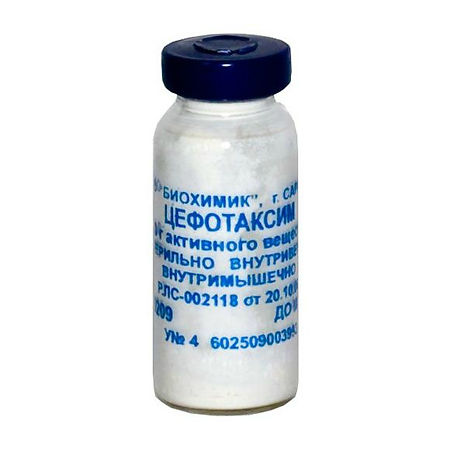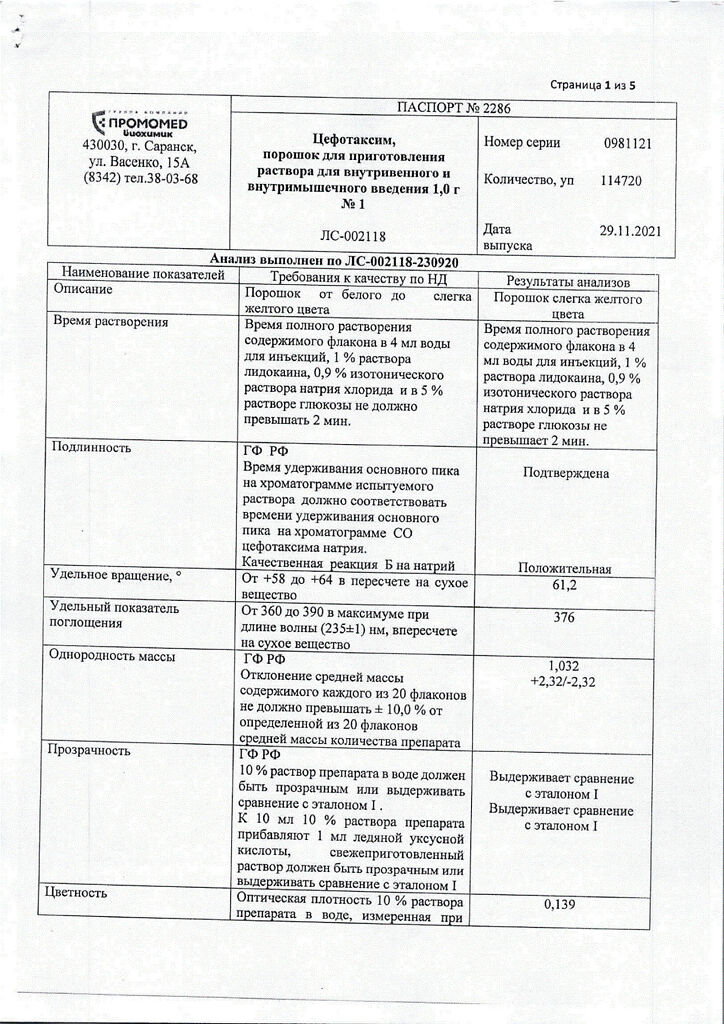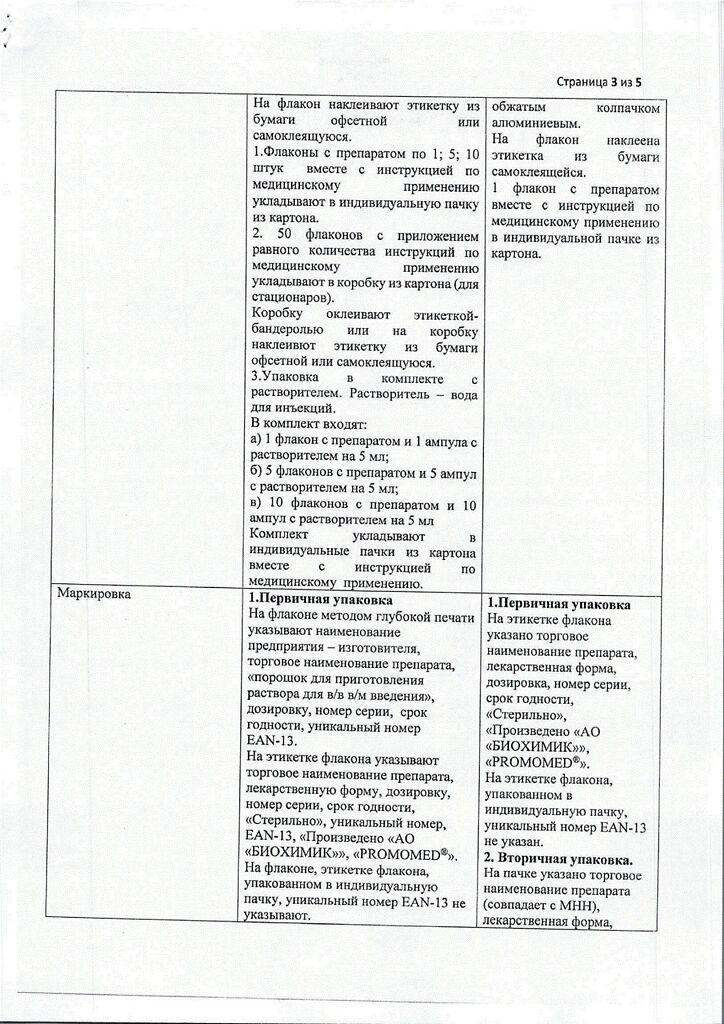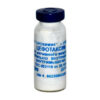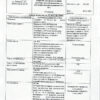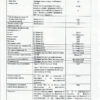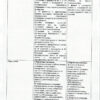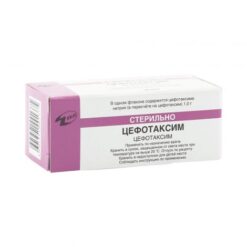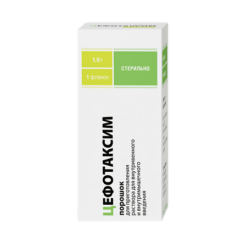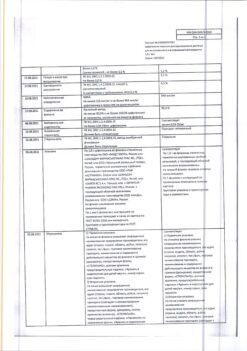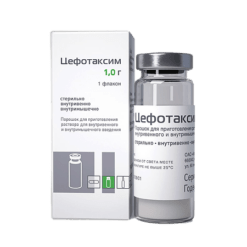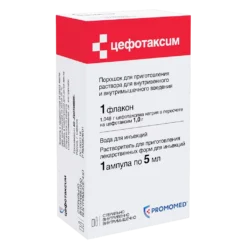No products in the cart.
Description
Cefotaxime is a III generation cephalosporin antibiotic for parenteral administration.
It acts bactericidally. The mechanism of action is associated with disruption of mucopeptide synthesis of the cell wall of microorganisms.
It has a wide range of antimicrobial action.
The drug is active against Gram-positive and Gram-negative microorganisms resistant to other antibiotics.
Resistant to most beta-lactamases of gram-positive and gram-negative microorganisms.
Indications
Indications
– CNS infections (meningitis).
– Infections of the respiratory tract and ENT organs.
– Urinary tract infections.
– Infections of bones and joints.
– Skin and soft tissue infections.
– Infections of the pelvic organs.
– Abdominal infections.
– Peritonitis.
– Sepsis.
– Endocarditis.
– Gonorrhea
– Infected wounds and burns.
– Salmonella.
– Lyme disease.
– Infections due to immunodeficiency.
– Prevention of infections after surgical operations (including urological, obstetric and gynecological, on the gastrointestinal tract).
Pharmacological effect
Pharmacological effect
Cefotaxime is a third generation cephalosporin antibiotic for parenteral administration.
Acts bactericidal. The mechanism of action is associated with a violation of the synthesis of mucopeptide in the cell wall of microorganisms.
Has a wide spectrum of antimicrobial action.
The drug is active against gram-positive and gram-negative microorganisms resistant to other antibiotics.
Resistant to most beta-lactamases of gram-positive and gram-negative microorganisms.
Special instructions
Special instructions
In the first weeks of treatment, pseudomembranous colitis may occur, manifested by severe, prolonged diarrhea. In this case, stop taking the drug and prescribe adequate therapy, including vancomycin or metronidazole.
Patients with a history of allergic reactions to penicillins may have increased sensitivity to cephalosporin antibiotics. When treating with the drug for more than 10 days, monitoring of the peripheral blood picture is necessary. During treatment with cefotaxime, it is possible to obtain a false-positive Coombs test and a false-positive urine test for glucose.
During treatment, you should not drink alcohol, since effects similar to those of disulfiram are possible (facial hyperemia, spasms in the abdomen and stomach, nausea, vomiting, headache, decreased blood pressure, tachycardia, shortness of breath).
Active ingredient
Active ingredient
Cefotaxime
Composition
Composition
1 bottle of powder for preparing a solution for intravenous and intramuscular administration contains:
cefotaxime (in the form of sodium salt) 1 g.
Powder for preparing a solution for intravenous and intramuscular administration.
Contraindications
Contraindications
– Pregnancy.
– Children up to 2.5 years of age (for intramuscular administration).
– Hypersensitivity (including to penicillins, other cephalosporins, carbapenems).
The drug should be used with caution:
– In newborns.
– During lactation (excreted in breast milk in small concentrations).
– For chronic renal failure.
– With UC (including history).
Side Effects
Side Effects
From the side of the central nervous system: headache, dizziness.
From the urinary system: impaired renal function, oliguria, interstitial nephritis.
From the digestive system: nausea, vomiting, diarrhea or constipation, flatulence, abdominal pain, dysbacteriosis, impaired liver function; rarely – stomatitis, glossitis, pseudomembranous enterocolitis, increased activity of liver transaminases and alkaline phosphatase, hyperbilirubinemia.
From the hematopoietic organs: hemolytic anemia, leukopenia, neutropenia, granulocytopenia, thrombocytopenia, agranulocytosis, hypocoagulation.
From the cardiovascular system: potentially life-threatening arrhythmias after rapid bolus administration into the central vein.
Laboratory indicators: azotemia, increased urea concentration in the blood, hypercreatininemia, positive Coombs test.
Local reactions: phlebitis, pain along the vein, pain and infiltration at the site of intramuscular injection.
Allergic reactions: urticaria, chills or fever, rash, itchy skin; rarely – bronchospasm, eosinophilia, malignant exudative erythema (Stevens-Johnson syndrome), toxic epidermal necrolysis (Lyell’s syndrome), angioedema, anaphylactic shock.
Other: superinfection (vaginal and oral candidiasis).
Interaction
Interaction
Cefotaxime increases the risk of bleeding when combined with antiplatelet agents and NSAIDs. The risk of kidney damage increases with concomitant use of aminoglycosides, polymyxin B and loop diuretics.
Drugs that block tubular secretion increase plasma concentrations of cefotaxime and slow down its elimination. Pharmaceutically incompatible with solutions of other antibiotics in the same syringe or dropper.
Overdose
Overdose
Symptoms: convulsions, encephalopathy (if administered in high doses, especially in patients with renal failure), tremor, neuromuscular irritability.
Treatment: symptomatic, there is no specific antidote.
Storage conditions
Storage conditions
In a place protected from light, at a temperature not exceeding 25 °C.
Shelf life
Shelf life
2 years
Manufacturer
Manufacturer
Biokhimik JSC, Russia
Additional information
| Shelf life | 2 years |
|---|---|
| Conditions of storage | In a light-protected place at a temperature not exceeding 25 °C. |
| Manufacturer | Biokhimik JSC, Russia |
| Medication form | Powder for preparation of solution |
| Brand | Biokhimik JSC |
Other forms…
Related products
Buy Cefotaxime, 1 g with delivery to USA, UK, Europe and over 120 other countries.

